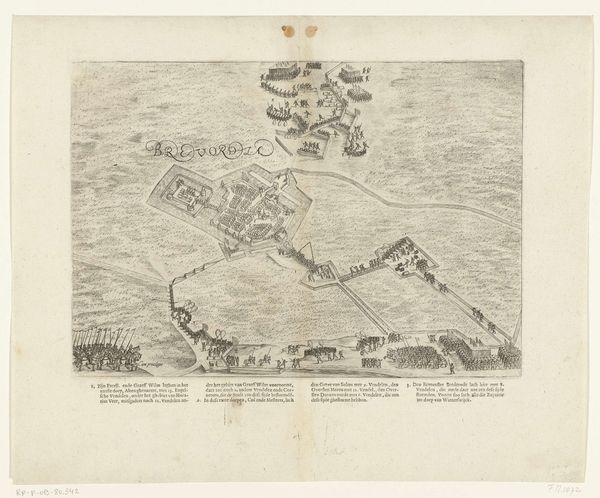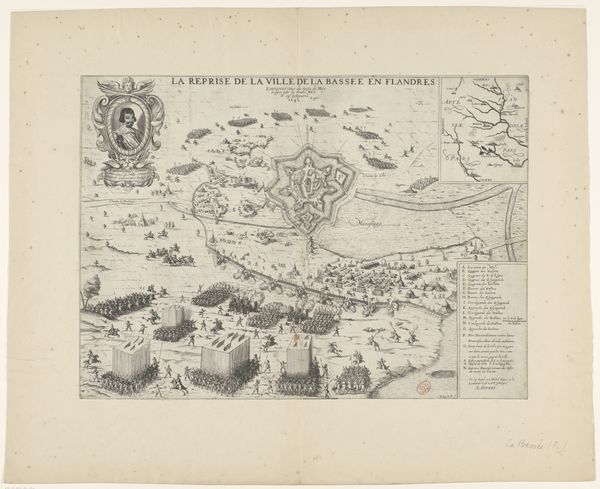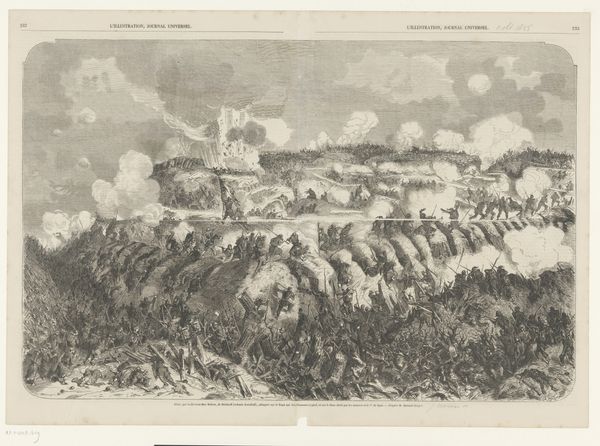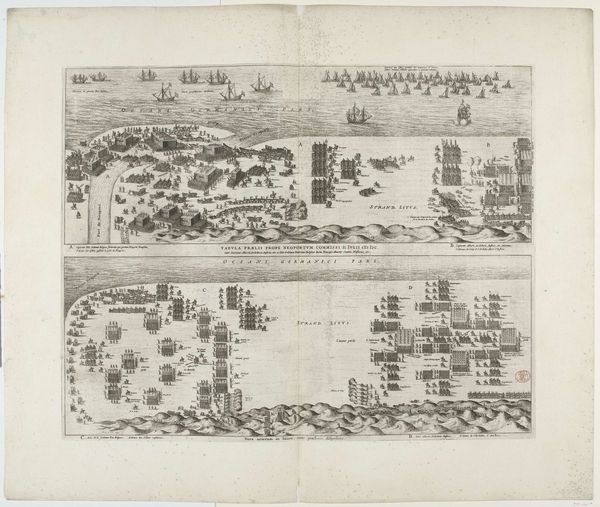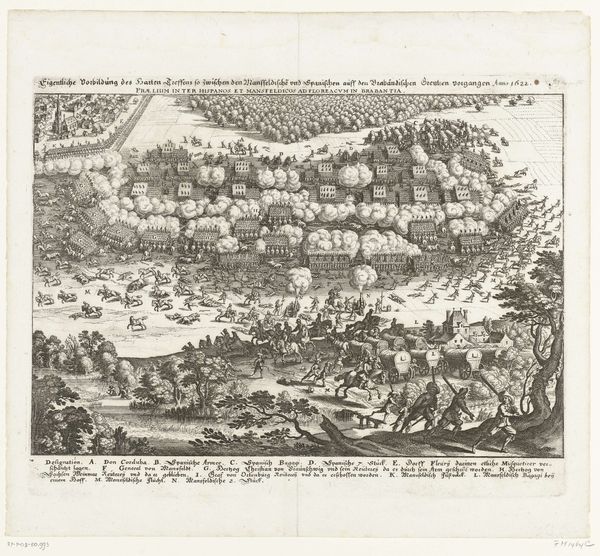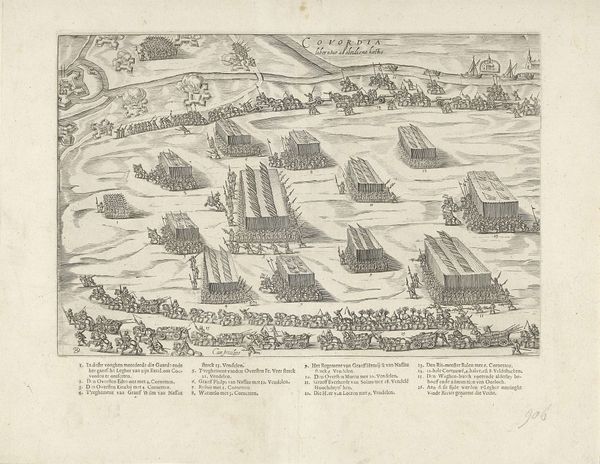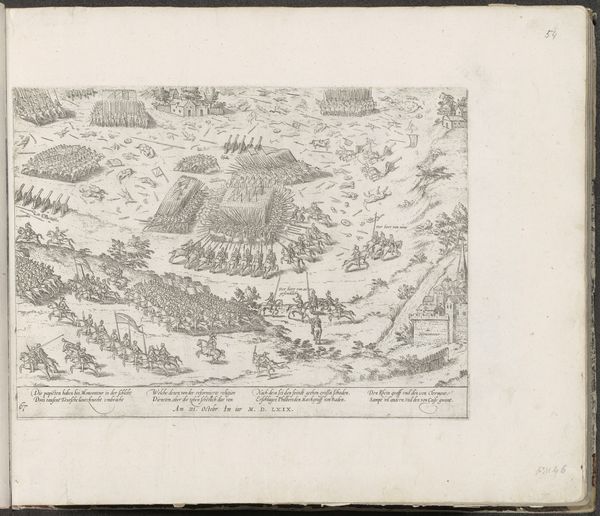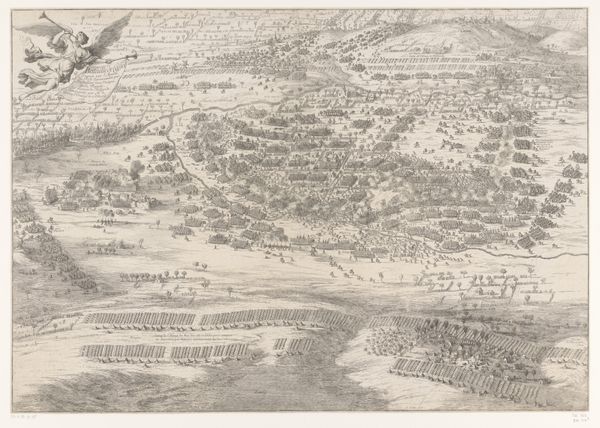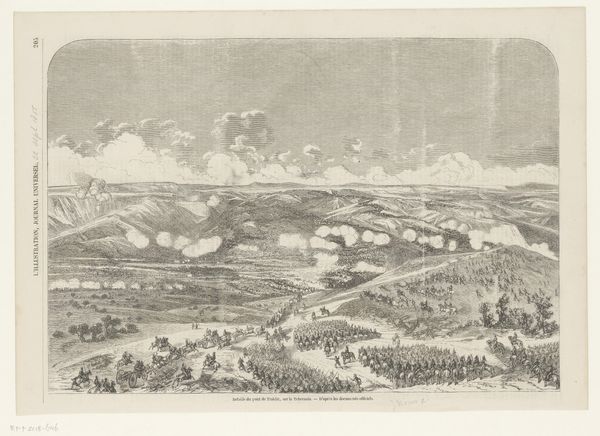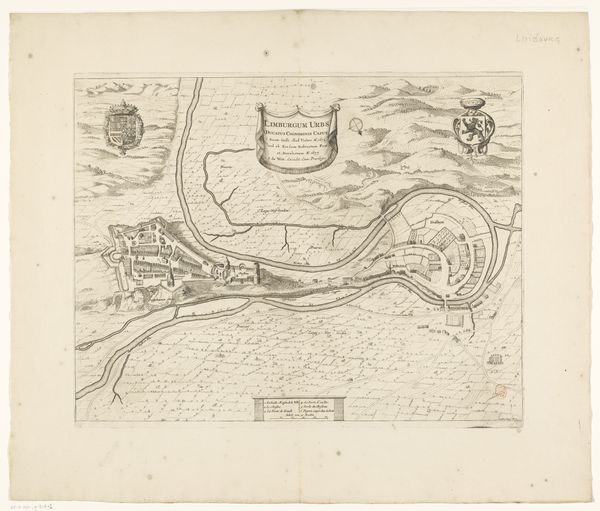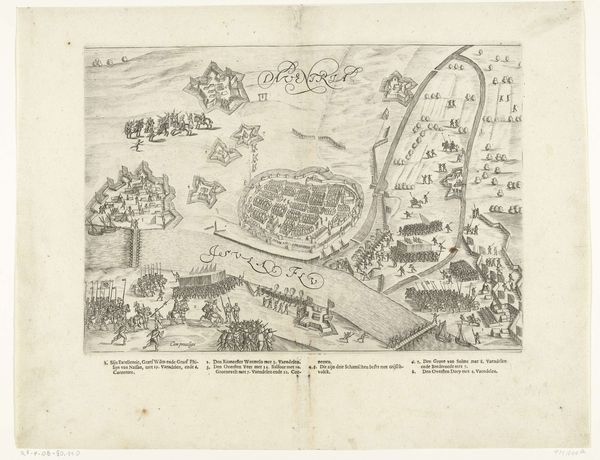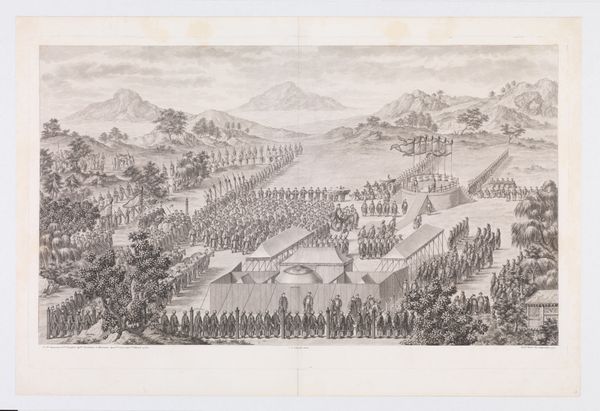
drawing, print, ink, engraving
#
drawing
#
pen drawing
# print
#
landscape
#
ink
#
history-painting
#
engraving
Dimensions: height 364 mm, width 483 mm
Copyright: Rijks Museum: Open Domain
Curator: Pieter Bast's engraving, "The Battle of Nieuwpoort, 1600," is an incredibly detailed rendering of the battle, showcasing the precise troop formations and topographical landscape. Editor: My immediate reaction is that it looks incredibly orderly. Almost like a game board. The masses of figures feel more like neatly arranged pieces rather than a scene of brutal conflict. Curator: Exactly. Notice how Bast uses linear perspective to organize the composition. The landscape flattens as it recedes, providing a structured overview. Look at the repetitive patterns of the infantry squares, rendered with an incredible degree of accuracy for the time. It emphasizes order and control, not chaos. Editor: But this order comes at a cost. What's obscured in this calculated overview is the violence and human suffering that are inherently bound to warfare. Bast's choices here contribute to an understanding of the 80 year war, specifically the ongoing fight for the Netherlands independence and its heavy price. We are removed from that immediate visceral experience. The strategic advantage point he choses reinforces narratives of leadership, strategic genius over and against human realities. Curator: While your points about the brutal realities are essential to remember, to truly appreciate the print, let's examine Bast's mastery of the engraving technique itself. Look at the delicate line work and the subtle variations in shading achieved with just ink. See how that intricacy describes the contours of the landscape and renders minute details. Editor: I agree that it's technically proficient, but for me, it underscores how this level of artistic intervention serves to sanitise history, creating an experience disconnected from tangible conflict. As we observe such an approach to such subjects, we might also use this work to question: Who and what does this representation serve? Curator: I find your arguments persuasive. The print does offer more layers to be unpacked when viewed within the sociopolitical context. But it's impossible to deny Bast's deftness and how the choices amplify the formal qualities to give the scene legibility. Editor: Perhaps a reminder that art can, and often does, both conceal and reveal depending on whose perspective frames our point of analysis.
Comments
No comments
Be the first to comment and join the conversation on the ultimate creative platform.
